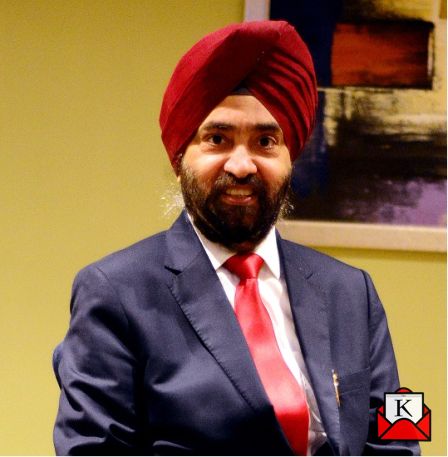Guest Blog- Glaucoma-A Leading Cause of Vision Loss


Glaucoma or ‘Kala Motia’ is a condition wherein an increased intraocular pressure damages the optic nerve thereby affecting vision. A fluid known as aqueous nourishes the front part of the eye. In the normal eye, the rate of production of aqueous matches the rate of its drainage, thereby maintaining optimal pressure inside the eye. With age, disease, trauma or other factors, the channels carrying this fluid may get blocked, increasing the pressure inside the eye. This increased pressure damages the optic nerve, which is the conduit of visual messages to the brain. Working silently, glaucoma damages the outer or peripheral vision first while maintaining the central vision.
Glaucoma is called the silent thief of sight because in the early stages of the disease, there may be no Symptoms. This condition threatens vision and is known to gradually steal sight without warning. By the time glaucoma is detected, the patient has already suffered extensive peripheral vision damage which can no longer be restored.
It is the leading cause of blindness in the United States and a study presented at the World Ophthalmological Congress in 2008 has projected India as the next glaucoma capital. Almost 68% Indians run the risk of developing the disease and nearly 1.2 lakh Indians go blind every year due to this disease.
YOU ARE AT RISK, IF:
You are 45 years of age or above
You have a family history of glaucoma
You have health problems such as diabetes, hypertension or thyroid disease
You suffer from myopia or nearsightedness
You have had ocular trauma or intra ocular surgery in the past.
TYPES OF GLAUCOMA
There are two major types of glaucoma – Chronic or Primary Open- Angle Glaucoma (POAG) and Closed or Acute Angle-Closure Glaucoma. The chronic open angle form of glaucoma is the most common form. Damage to vision is gradual and generally painless. In the Closed or Acute form, the intraocular pressure increases very rapidly due to a sudden and severe block of fluid drainage within the eye. Significant symptoms indicating the presence of acute glaucoma appear immediately. This condition has to be treated quickly by an ophthalmologist otherwise blindness may occur.
SYMPTOMS
Inability to adjust the eyes to darkened rooms such as theaters
Poor night vision
Frequent changes in eyeglass prescription
Gradual loss of peripheral vision
Blurred vision
Feeling of a blind area in the eye
Seeing rainbow colored halos around lights
Severe eye pain, facial pain, nausea and vomiting
Red eye
CURE FOR GLAUCOMA
Glaucoma cannot be cured but it can be controlled so that further damage to the optic nerve can be slowed down or halted. This can only be done through disciplined and regular treatment from an ophthalmologist. The treatment of glaucoma is life-long.
MANAGEMENT OF GLAUCOMA
Glaucoma treatment may include medical management, surgical management or management by lasers. Medical management is done with eye drops. Surgical management includes a procedure where an opening is made to create a new drainage pathway for the fluid to leave the eye easily.
Management by lasers includes procedures such as trabeculoplasty, in which a laser is used to pull open the trabecular meshwork drainage area; iridotomy, in which a tiny hole is made in the iris, allowing the fluid to flow more freely; and cyclophotocoagulation, in which a laser beam treats areas of the ciliary body, reducing the production of fluid.
TREATING WAYS
There is no proven way to prevent glaucoma. Frequent monitoring, regular checkups can help detect the disease in its early stages.
Don’t let glaucoma limit your life. You can continue with what you were doing before glaucoma was diagnosed. You can make new plans and start new ventures.
Take your medicines exactly as prescribed. Use the right drop in the right eye at the right time in the right way.
Try to schedule time for taking medication around daily routines such as waking, mealtimes and bedtime.
Drinking large quantities of water on empty stomach early morning should be stopped. This habit temporarily increases the Intra Ocular pressure.
About the author- Dr. Mahipal S. Sachdev, Chairman, Centre for Sight
